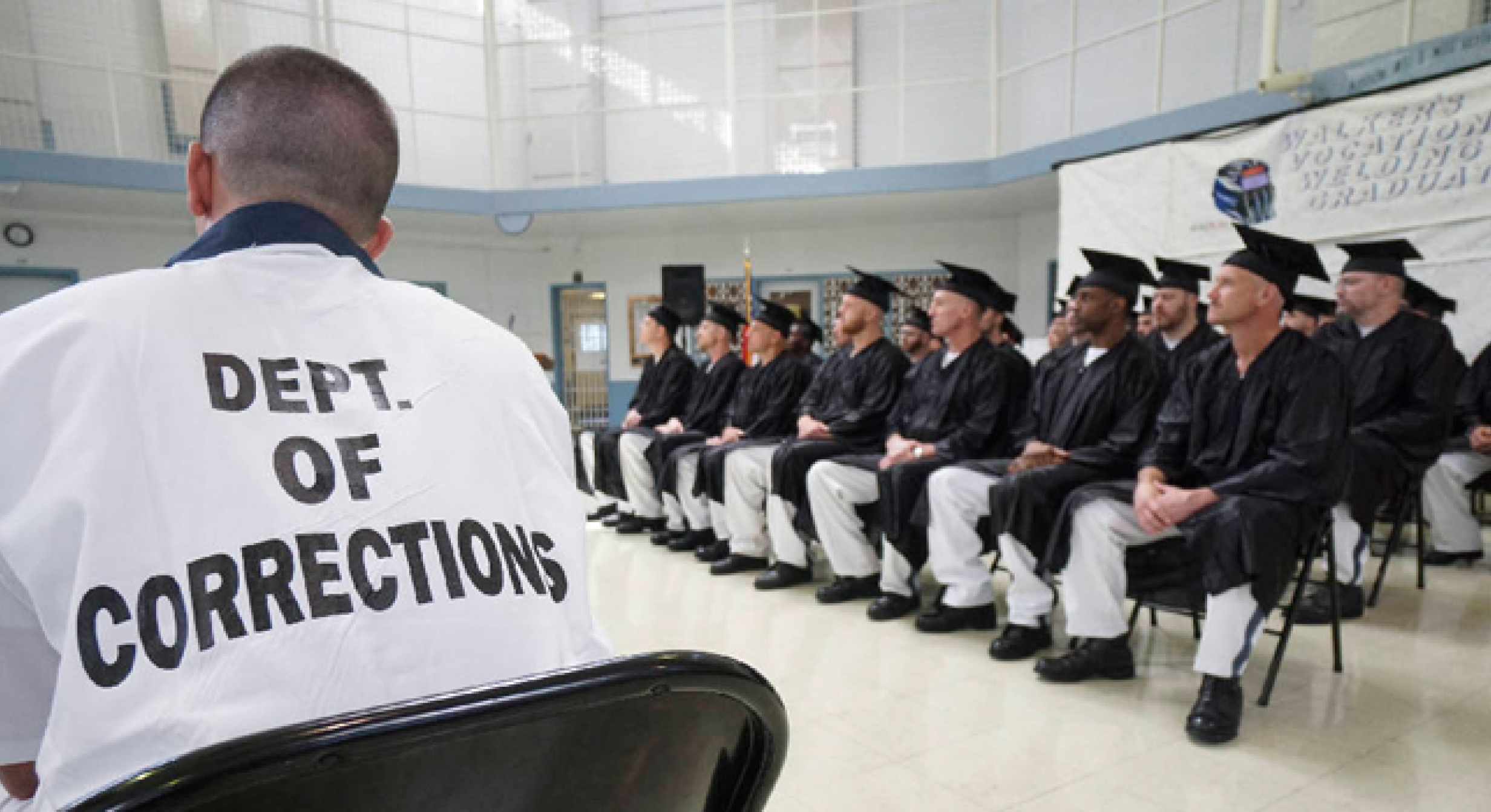What Are Prison-Based Apprenticeships?
Prison-based apprenticeships were established by The Occupational Educational Program in the Bureau of Prisons (BOP) with the purpose of helping people who were previously or currently incarcerated gain marketable skills through a variety of different occupations. Later in 2015, the BOP partnered with the U.S. Department of Labor and Office of Apprenticeship to create and develop an apprenticeship standard that all participating programs would have to follow.
These kinds of educational training programs exist in prisons to help equip inmates returning from prison with knowledge, skills, and abilities that help them overcome the many barriers they experience when attempting to reenter the job market. Many of these are focused on building the basic skill levels of participants. Correctional facilities can partner with either career civil-service vocational training instructors or create contracts with colleges and technical schools to provide the related technical learning for their apprenticeship programs.
Image provided by The National Center for Educational Statistics
Prison apprenticeship programs typically require an inmate to have a GED or high school diploma or be currently enrolled in a literacy program as a requirement. Wage progressions are standardized through the BOP's internal systems with programs usually following a time-based template with a few hybrid models that usually consist of 2,000+ hours with a recommended minimum of 144 hours of classroom instruction annually, according to the DOL they can also take up to three or four years to complete.
Upon completion, each apprentice graduates with an industry-issued, nationally recognized credential from the DOL. Research commissioned by the DOL shows that these programs are proven to increase participants’ wages and provide job opportunities.
How Are They Beneficial?
In today’s society, as many as 1 in 3 Americans have a criminal record. This means that each year, millions of Americans struggle to find jobs that make it possible for them to support themselves and their families. Many experts have concluded that one of the most important things career training in prisons can provide is a credential that’s recognized on the outside once an inmate is done serving their time.
Studies show that inmates who have participated in correctional education from GED certificates to college degree programs are 43 percent less likely to return to prison, on top of that apprenticeship programs have a history of providing a $5 return for every taxpayer dollar spent, according to the Rand Corp. Polling published last year found that nine out of ten businesses that hire ex-offenders say they are reliable, good at their job, punctual, and trustworthy.
Currently, apprentices represent a small but growing share of the working prison population as more than 9,000 incarcerated individuals have been enrolled in apprenticeship programs since 2016. Research suggests that prison education programs, including apprenticeships and other vocational and academic programs, are successful in reducing recidivism and improving inmates’ labor market outcomes post-release.
Additionally, apprenticeship programs allow incarcerated individuals to connect with potential employers. Ideally, these programs should help apprentices connect with outside employment opportunities by partnering with local unions and employers to help connect inmates with jobs prior to release. In addition to the DOL certificate, some apprentice programs offer opportunities for participants to earn industry certifications while incarcerated.
Image Provided By Carlos Osorio/AP
Recent Sucess
In 2016, the country saw more than 200,000 workers enrolled in U.S. Department of Labor Registered Apprenticeship (RA) programs in industries ranging from construction to computer science. What is less well-known is that on average, more than 8 percent of RA entrants each year are individuals who are currently incarcerated.
Apprenticeships have a long history in the United States, and with a new interest as well as funding from policymakers, these programs are experiencing a resurgence. In 2014, then-President Barack Obama announced a national goal to double the number of apprentices nationwide in five years. Since then, the number of apprentices has increased by 23 percent. The momentum around apprenticeship programs is likely linked to their impressive stats boasting a 91 percent post-program employment rate and an average annual starting wage of $50,000 upon program completion.
The Iowa Department of Corrections, or DOC, has experienced significant success with its new apprenticeship program. In 2014, the state’s DOC transitioned their current prison industry jobs into apprenticeship programs. Fast forward to today and it sponsors 19 registered apprenticeships across nine facilities.
"One thing we do really well in Iowa is working with different state agencies, a state agency that aims to connect workers to opportunities and employers to workforce solutions. Iowa Workforce Development collaborates with Iowa's Department of Corrections and other agencies to help people find work once they leave prison and employers find the talent they need.”
Ryan West, Deputy Director of Iowa Workforce Development
The majority of the state’s apprentice programs are run through Iowa Prison Industries in occupations such as cabinet making, metal fabrication and welding, screen printing, and computer operations. Since 2015, program participation has increased by more than 700 percent, and the program currently has 277 registered apprentices. Since starting the program, 71 apprentices have completed it.
Push For Development & Expansion
When it comes to apprenticeship programs in correctional facilities the demand for education and training in prisons often exceeds the available programming. This means that some incarcerated people are not provided the same opportunities that they need to be successful upon re-entry into society. The 2014 Program for the International Assessment of Adult Competencies Survey of Incarcerated Adults found only 42 percent of incarcerated people completed formal education in prison, while over 70 percent desired it.
Recently an increase in government funding and interest has seen the use of apprenticeship programs skyrocket in recent months and programs like the state of New York “Jails to Jobs” initiative have been introduced to work toward improving re-entry into the workforce as well as reduce recidivism by using education as a pathway to opportunity.
At the same time, new national campaigns like the Biden administration's introduction of the Apprenticeship Building America Program have injected new funding into helping strengthen, modernize, diversify, and expand Registered Apprenticeships across the nation. Increasing the overall presence of these programs will drive expansion while also providing more opportunities to prove their success and effectiveness when helping the formerly incarcerated re-enter society.








.png)

